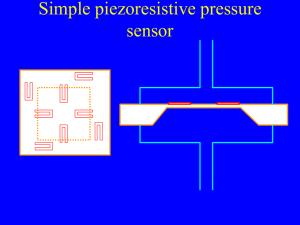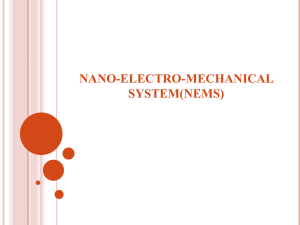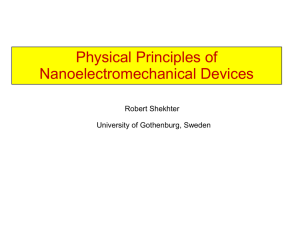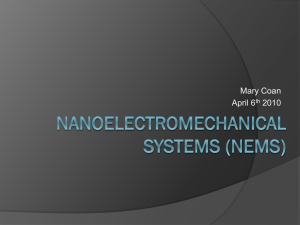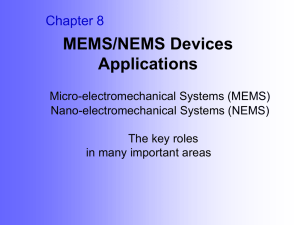NEMS: Nano Electro Mechanical Systems - Introduction & Applications
advertisement
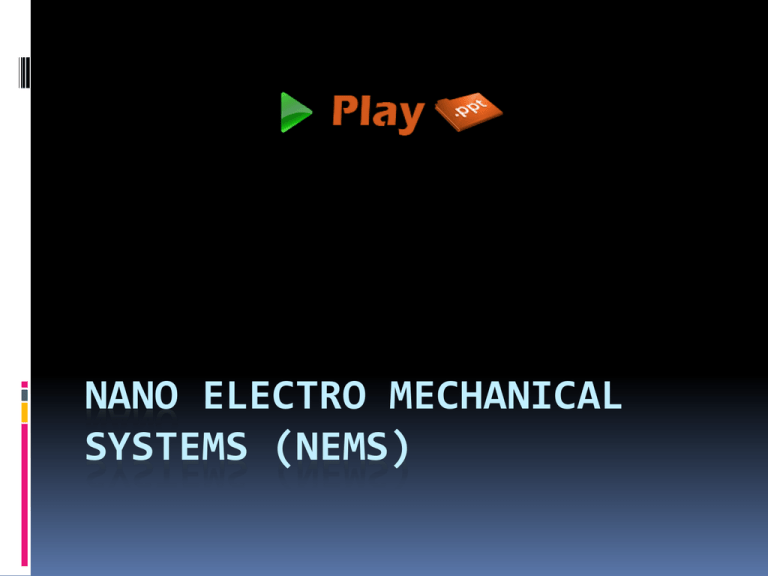
NANO ELECTRO MECHANICAL SYSTEMS (NEMS) What is NEMS? The term Nanoelectromechanical systems or NEMS is used to describe devices integrating electrical and mechanical functionality on the nanoscale. NEMS form the logical next miniaturization step from so-called microelectromechanical systems, or MEMS devices. NEMS - Definition NEMS is the integration of sensors, actuators, electronics, photonics, energy, fluidics, chemistry, and biology into a meaningful system enabled by sub micrometer science and engineering precision. Nanowires Nanowires such as nanoLED arrays might enable a new class of nanodisplays. But consider fabricating nanowires out of dissimilar materials such as gallium arsenic on silicon. The ability to realize vertical nanowires composed of metals, semiconductors, and insulators on silicon and other substrates will enable new types of high performance, heterogeneous micro- and nanosystems. And they can be formed without the usual considerations of lattice strain matching that occurs in microscale dimensions. Nanowires NEMS in Nano Biotechnology NEMS will also enable other important new opportunities in the emerging field of nanobiotechnology. The ultrasensitive detection method could replace complicated optical fluorophore tags and optical readout methods routinely used by molecular biologists with a simple electrically measured parameter—frequency. A biocantilever diving board fabricated by Professor Michael Roukes at CalTech has shown the ability to detect small mass changes as low as 7 zeptograms, which is roughly the mass of a single protein molecule! Nanoassembly The most important area of NEMS opportunity arises— programmable self-assembly for heterogeneous nanointegration. It is simply called as nanoassembly––a new manufacturing paradigm that allows for the directed self-assembly of components into precise locations on a substrate. Nanoassembly might also be used to build systems on non-planar or 3D surfaces where traditional monolithic integration has failed. Approaches to miniaturization Two complementary approaches to fabrication of NEMS systems can be found. The top-down approach The bottom-up approach Top-down approach The top-down approach uses the traditional microfabrication methods, i.e. optical and electron beam lithography, to manufacture devices. Typically, devices are fabricated from metallic thin films or etched semiconductor layers. Bottom-up approach Bottom-up approaches, in contrast, use the chemical properties of single molecules to cause single-molecule components to (a) self-organize or self-assemble into some useful conformation, or (b) rely on positional assembly This allows fabrication of much smaller structures, albeit often at the cost of limited control of the fabrication process. Future of NEMS NEMS devices, if implemented into everyday technologies, could further reduce the size of modern devices and allow for better performing sensors. Carbon based materials have served as prime materials for NEMS use, because of their highlighted mechanical and electrical properties. Conclusion In summary, the MEMS revolution that began at DARPA in the early 1990s will continue to bring new and more powerful microsystems to the commercial world and defense community. Therefore, there is no doubt that the Age of NEMS will produce exciting new capabilities we are only now beginning to imagine. Thank You!!! www.playppt.com



